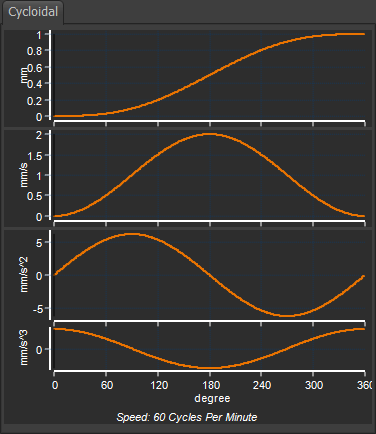Cycloidal Cam-Law, Motion-Law
Motion Description
Motion-Values You CAN control the:
You CANNOT control the:
Segment Parameters
Segment-Range
See also : See also : |
||||||||
 Cycloidal Motion-Law (Cam-Law) Motion-Law Coefficients
|
||||||||
Application Notes
|
|
<< Click to Display Table of Contents >> Navigation: MotionDesigner Reference & User Interface > Motion Laws / Cam-Laws for Segments > Cycloidal Motion-Law |
Motion Description
Motion-Values You CAN control the:
You CANNOT control the:
Segment Parameters
Segment-Range
See also : See also : |
||||||||
 Cycloidal Motion-Law (Cam-Law) Motion-Law Coefficients
|
||||||||
Application Notes
|